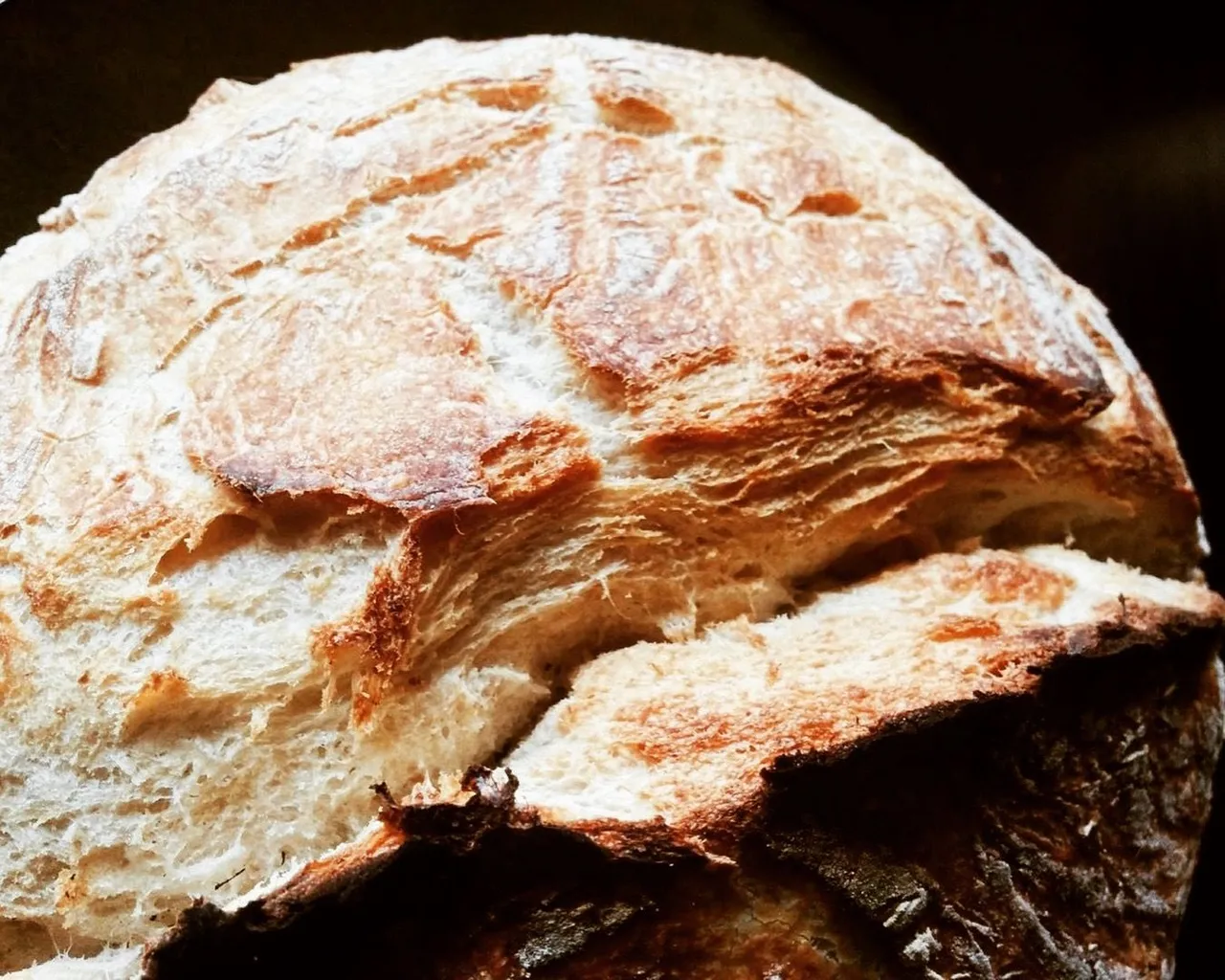My relationship with sourdough started over a year ago, and since then, it's been pretty hot and heavy.

I learned about sourdough bread a bread baking workshop that I got to attend for free out of sheer luck. I didn't know anything about baking bread up until then, and even less about sourdough.
Right when I walked into the classroom kitchen, a subtle but distinctive scent of fresh baked bread greeted me. Then came the bread itself, crunch crust, soft inside, and fragrant and tangy, with a generous portion of butter and honey. One bite, and I was hooked. "What is this bread? Where did you get this, some fancy new French bakery?" were questions that immediately came to my mind.
Turns out, that workshop was all about how to make artisanal sourdough bread...the very same bread I had just tasted. What I learned that day opened my eyes and I want to share that here with you, to pass on that knowledge and turn you on to sourdough, one of our oldest & most nutritious bread.

Some interesting food for thought:
- Sourdough may have originated in Egypt in 4000 B.C.
- Most grains have phytic acid, which blocks the uptake of critical minerals like calcium, magnesium, copper and zinc
- Whole wheat is actually more difficult to digest than processed grains because it has more phytic acid
- Sourdough fermentation is a lactofermentation process that breaks down phytates and enzyme inhibitors, making easier for us to process the nutrients in grains
- Sourdough fermentation aids in breaking down starches and gluten
- Dr. Weston Price found that in Switzerland’s Lötschental –an isolated valley where residents primarily existed on what they could grow, made huge loaves of sourdough rye that went through a two week fermentation process. They are also some of the healthiest people on the planet
You can learn more about the benefits of sourdough here.
Ready to make your own artisanal sourdough bread? You can make the same crusty and tangy sourdough loaves you see in bakeries in your own kitchen using a few simple ingredients: flour, salt, water.
Start with the "starter"
Much like making yogurt or kombucha, this is your culture that you need to ferment your dough. You can get starter by asking someone who's baking their own sourdough bread or you can make the starter yourself. Supposedly, the older the starter, the better your bread with be. The famous Boudin Bakery claims their bread is made with the same mother dough that they had since 1849. It's literally a piece of history.
Feeding your starter
Your starter can be left in the fridge untouched for at most a month before it goes bad. If you want to keep it active and ready to bake, you'll need to take it out of the fridge and give it more flour and water at least every 2 weeks. I use my starter quite often to make bread, as well as sourdough pancakes and sourdough cinnamon rolls, so it's refreshed very often. I usually maintain about 1 1/2 cups of starter at all times.
My own procedure is as follows:
- The evening before I plan to bake, I pull out my starter from the fridge and let it sit near a warm place (like the wood burning stove).
- Then I take out the amount I need to use to bake (1 cup for bread), and that leaves me 1/2 cup of starter left.
- I add to the remaining starter 1 cup of flour and 1/2 cup of water, stir it, then put it back in the fridge.
- Tip: I store the starter in a gallon glass jar. It's helpful to have the measurements on the side of the jar to keep track of your quantity. Whatever container you choose, leave extra room because your starter will bubble and expand as it sits in room temperature.
Baking a Rustic Sourdough Bread Loaf (No Kneading Needed!)
The secret to the beautiful round shape and that dark, golden crunch crust is the cooking pot! You will need either a deep cast iron pan with a lid or a dutch oven.
Recipe:
- 4 cups organic white flour (or whole wheat flour)
- 2 cups barley, rye, whole wheat, garbanzo or any other flour (my favorite combination is rye + garbanzo)
- 1 tbs salt
- 1/4 tsp yeast
- 1 cup starter
- 2 1/2 cups non-chlorinated water (I like my bread fluffy and with lots of holes, so I've adjusted by adding an additional 1/8 cup of water to my dough and that does the trick).
Mix flour, salt, yeast together in a large bowl. In a small bowl, mix sourdough and water. Pour the starter mixture into the dry ingredients and lightly knead in the bowl until combined. Cover bowl with a towel and let it sit in a warm place for 18-24 hours. The longer you let it sit, the more sour it will get.
Pour flour along the edges of the bowl to separate the dough from the sides. Shape into a ball and wrap in tea towel. Let sit on counter as you preheat the dutch oven. Turn the oven on to 475 degrees and put the dutch oven with lid into the oven for 30 minutes. Once heated, put the dough into the dutch oven, and bake with lid ON for 30 minutes. Then bake another 5-10 minutes with the lid OFF.
Voila!
